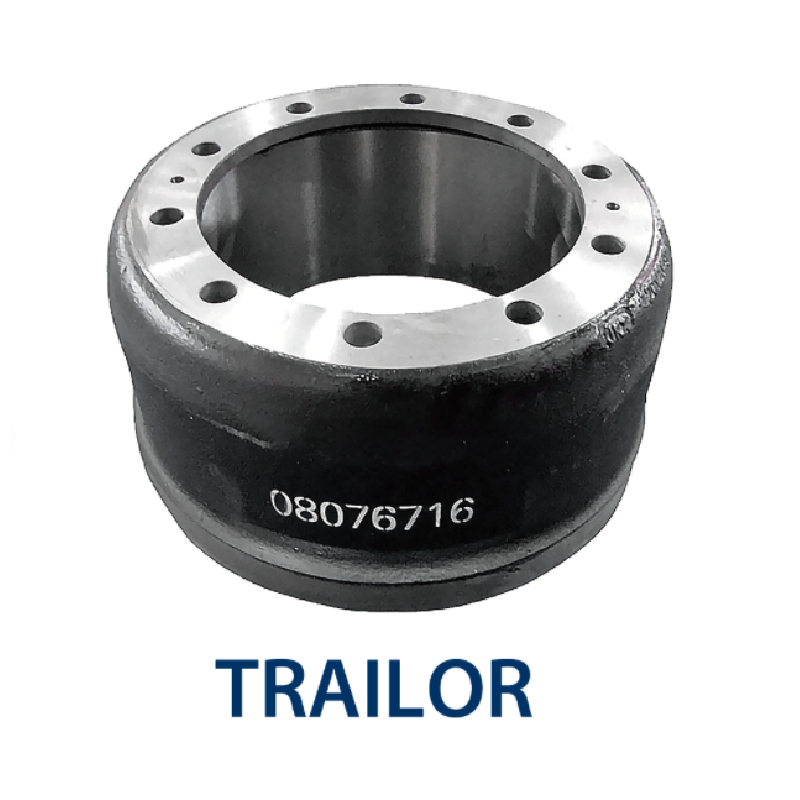Des . 15, 2024 06:05 Back to list
composite brake drum
The Evolution and Benefits of Composite Brake Drums
Brake systems are integral to the safety and performance of vehicles, and among the components that play a crucial role in these systems are brake drums. Traditionally made of cast iron, brake drums are essential for slowing down or stopping vehicles effectively. However, with advancements in materials science, composite brake drums have emerged as a game-changer in the automotive industry. This article delves into the evolution of brake drums, focusing on the advantages of composite materials.
Historical Context
Brake drums have been utilized in vehicles since the early days of the automotive era. Their design has evolved significantly, but the fundamental premise remains the same to provide a reliable surface for the friction material to grip onto, thereby converting kinetic energy into heat. Traditionally, cast iron has been the material of choice due to its excellent strength and wear resistance. However, the weight of cast iron, combined with its susceptibility to rust and thermal expansion, has prompted engineers to explore alternative materials.
Introduction of Composite Materials
Composite materials, formed from two or more constituent materials with different physical or chemical properties, have gained popularity in various industries, including aerospace and automotive. In brake drum applications, composites can be engineered to achieve specific properties that enhance performance and longevity.
Composite brake drums are typically made from a combination of polymers, fibers, and reinforcement materials. This results in products that offer significant weight savings compared to traditional cast iron drums. The reduction in weight directly contributes to improved fuel efficiency and vehicle dynamics, enhancing both performance and environmental sustainability.
Advantages of Composite Brake Drums
1. Weight Reduction One of the most significant benefits of composite brake drums is their reduced weight. Lightweight materials improve the overall performance of vehicles, leading to better acceleration, improved braking efficiency, and enhanced fuel economy.
composite brake drum

2. Corrosion Resistance Unlike cast iron, which is prone to rusting, composite materials are inherently resistant to corrosion. This property extends the lifespan of brake drums, reducing maintenance costs and increasing reliability, particularly in harsh environmental conditions.
3. Thermal Management Composite brake drums can be engineered for better thermal management. They can dissipate heat more effectively than traditional materials, which helps to prevent brake fade—a situation where brakes lose effectiveness due to overheating. Improved thermal performance enhances safety during high-stress driving conditions, such as downhill descents or heavy braking.
4. Noise Reduction The unique properties of composite materials can also lead to reduced noise and vibrations during braking. This feature contributes to a more comfortable driving experience, appealing to consumers who prioritize cabin quietness.
5. Design Flexibility Composite materials allow for more versatile design options. Engineers can create brake drums that are tailored to specific performance criteria, leading to innovations in braking systems that improve overall vehicle design and functionality.
The Future of Composite Brake Drums
The transition to composite brake drums is representative of broader trends in the automotive industry. As manufacturers increasingly seek to improve fuel efficiency, reduce emissions, and enhance vehicle safety, composite materials are likely to become more prevalent. The automotive sector is evolving rapidly, driven by technological advancements and a growing emphasis on sustainability.
Major automotive manufacturers and aftermarket suppliers are investing in research and development to optimize the processes for producing composite brake drums. Cost-effective manufacturing techniques, such as injection molding and reinforced polymer composites, are expected to facilitate the widespread adoption of these advanced materials.
Conclusion
Composite brake drums are revolutionizing the braking systems in modern vehicles. With their numerous advantages, including reduced weight, enhanced thermal performance, and improved durability, they present a compelling case for replacing traditional cast iron drums. As the automotive industry continues to innovate and prioritize sustainability, the shift towards composite materials represents a significant step forward in enhancing vehicle performance and safety. The future of braking technology is bright, and composite brake drums are at the forefront of this exciting evolution.
-
Iveco Brake Drum | Premium OE Quality for Daily & Eurocargo
NewsAug.22,2025
-
Your Brake Drum Man: Quality & Performance Parts
NewsAug.21,2025
-
Explore Japan: Ultimate Travel Guide & Authentic Experiences
NewsAug.19,2025
-
Your Brake Drum Man: Premium & Reliable Brake Drums for Sale
NewsAug.18,2025
-
ROR Web Development: Build Fast, Scalable, Secure Apps
NewsAug.17,2025
-
Scania Brake Drums: OEM Quality for Optimal Safety & Durability
NewsAug.16,2025
